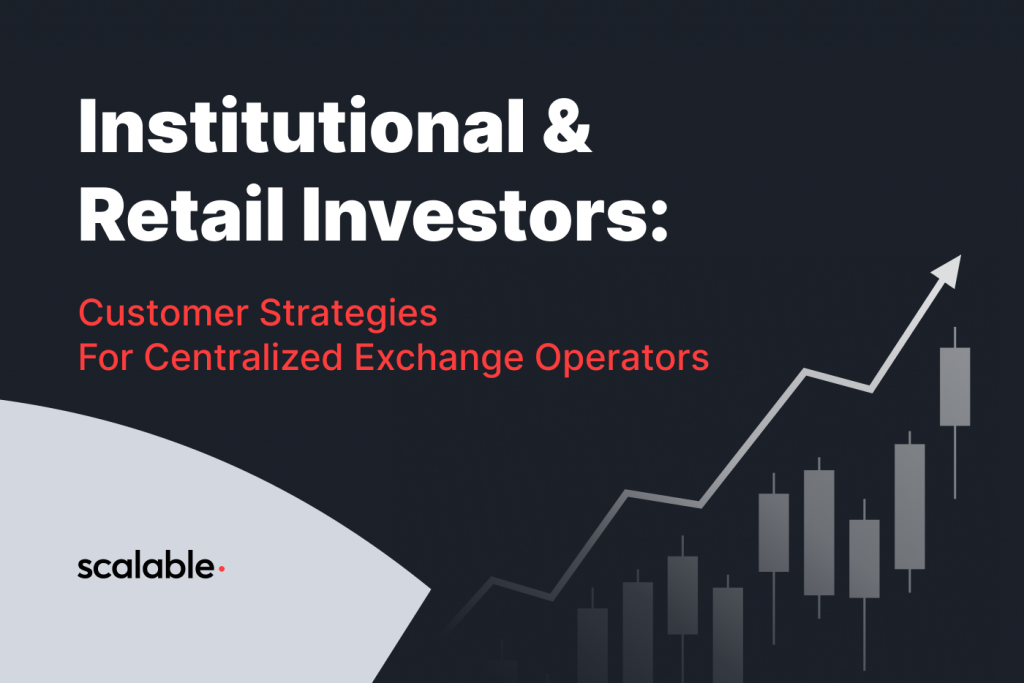Understanding one’s audience is one of the most critical challenges for any enterprise. This challenge is especially important in the case of digital asset exchanges, where the line between audience, or customer segments, can get blurred. Identifying potential users is an important task in deciding the type of exchange or brokerages services to integrate.
The approach to target each customer is then at least as demanding as identifying the user. Cryptocurrency exchanges have a dilemma — adapt their client strategy to their product, or adapt the product offering to a predetermined client strategy. They can offer more complex and valuable functionalities to professional traders (such as margin trading and leverage), or look for clients that are beginners in the space, thus focusing on the product offering, the user experience, and educating the user.
One of the benefits of building up your exchange with a white-label service provider is that you can do both simultaneously.
Mapping potential users of crypto exchanges
In order to develop a marketing and product strategy, one needs to first understand users’ problems and needs. Likewise, it is fundamental to understand the potential user personas that might become a part of the ecosystem.
We find several user personas, and classify them into two major categories: institutional and retail investors.
Institutional Investors
This category is primarily composed of professional traders, institutions (investment funds, mutual funds, pension funds), brokers, and high-net-worth individuals. Actors within this category are primarily concerned with:
Liquidity — Deep liquidity for the asset pairs provided on any exchange is an absolute necessity for institutional investors. The bigger the investor’s traded volumes, the more liquidity is needed to account for price impact, slippage, transaction fees, and more. Covered by a lack of regulatory requirements, some cryptocurrency exchanges are incentivized to synthetically produce high volume and mislead investors into assuming that the exchange can offer deep liquidity.
Scalability — Institutional investors require higher technical assurances than retail investors do. Cryptocurrency exchanges that continuously suffer from outages caused by increased adoption and trading volumes can have high costs on any yield-generating or hedging strategies. The impossibility to deposit or withdraw large sums of funds promptly prevents users from taking advantage of market opportunities, such as momentary arbitrage trading strategies.
Margin, options, and futures — Big institutional clients have, on average, higher trading needs. Counting on the possibility of leveraging trading, hedging, borrowing and more can persuade institutional actors to decide on one exchange over the rest.
Through leverage trading, institutional investors can access bigger funds to trade and take advantage of market opportunities, potentially maximizing benefits in a way not previously possible. Similarly, margin borrowing can reap diversification benefits when initial funds are not enough to take a position in a number of assets because of their price or minimum buy-in.
Shorting provides an excellent possibility to take advantage of markets (or assets) in downward trends, or even hedge against adverse movements.
Futures allow investors to gain tailored exposure — being exposed without having to hold the underlying cryptocurrency.
Because holding futures contracts doesn’t mean holding the underlying cryptocurrency, custody efforts are not a necessity.
Retail investors
This category is mainly composed of small private users that are taking their first steps in the industry, and mainly care about:
UX/UI and Educational resources — Providing a platform that allows users to interact with the product in a seamless, frictionless manner can be the differentiating factor between a successful cryptocurrency exchange and a failing one. High barriers to entry, demotivating onboarding processes, and complex information formats are enough to deter unknowledgeable retail investors from utilizing an exchange. Minimized barriers to entry, a motivating onboarding process, and easy transaction processes on the other hand entice users to go deeper into a digital asset exchange’s offerings.
Coin offering — Nowadays, no wallet provider can offer every single coin and token out there. A healthy balance of a large number of assets offered against robust security is paramount to a user’s analysis when choosing an exchange.
Other features
Besides the features mentioned above that can be traced back to a particular user persona, exchanges can offer other tempting alternatives:
Security + Multi-sig: Because of their daily volumes and total custodial funds, exchanges could be seen as forbidden honey-pots, making them constant targets for hackers. Security measures — such as Multi-sig — minimize the risks of hacks.
KYC/KYT/AML: Extensive KYC/AML measures provide an additional level of regulatory certainty to the digital asset trading industry, helping mitigate the risk of being exploited -intentionally or unintentionally — by bad actors with illicit behaviors.
Add-ons: Crypto-to-crypto support, multiple platform support, and more. Providing an ample and seamless offer to switch between crypto and fiat can make a world of difference, especially for those users that are just getting started. Similarly, offering users multi-platform support (such as mobile, web, and app) enables exchanges to adapt to a world characterized by the use of mobile devices and simplicity.
A wide white-label solution
Creating every feature outlined above is resource intensive. As each product starts to expand, so do the potential problems, and with them, the need for experience. Typically, cryptocurrency exchanges are plagued by constant trade-offs that eventually result in vulnerabilities.
By choosing a white-label partner, any exchange can tailor their solution to fit its outreach strategy — choose the users that might be open to using the product, or adapt the product depending on users’ needs.
At Scalable we take pride in our search for constant improvement. Our clients have the support of several teams encompassing hundreds of developers, ready to take on any request. In the case of features, we provide a majority of the ones mentioned above and can cater to custom client needs, as well. Our focus is multifold; our robust exchange infrastructure, deep liquidity, and secure custody live harmoniously without disregarding the features that make a great user experience.
Schedule a demo for a chance to see the Scalable exchange technology in action.
